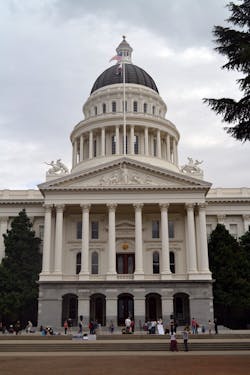
SACRAMENTO — California state agencies released a draft water resilience portfolio last week with a series of recommendations to help California cope with more extreme droughts and floods, declining fish populations, rising temperatures, aging infrastructure, and other challenges.
The California Natural Resources Agency, California Environmental Protection Agency, and Department of Food and Agriculture developed the draft to fulfill Governor Gavin Newsom’s April 29 executive order calling for a portfolio of actions to ensure the state’s long-term water resilience and ecosystem health.
Shaped by months of public input, the draft portfolio outlines more than 100 recommendations in four broad areas to help regions build water resilience and provide state leadership to improve infrastructure and protect natural ecosystems. Those areas include:
- Maintain and diversify water supplies: State government will help regions reduce reliance on any single water source and diversify supplies to allow flexibility. Diversification will look different in each region based on available water resources, but the combined effect aims to strengthen resilience and reduce pressure on river systems.
- Protect and enhance natural ecosystems: State leadership is essential to restore the environmental health of key river systems to sustain fish and wildlife. This requires effective standard-setting, continued investments, and more adaptive, holistic environmental management.
- Build connections: State actions and investment will improve physical infrastructure to store, move, and share water more flexibly and integrate water management through shared use of science, data, and technology.
- Be prepared: Each region must prepare for new threats, including more extreme droughts and floods and hotter temperatures. State investments and guidance will enable preparation, protective actions, and adaptive management to weather these stresses.
“This draft portfolio has been shaped to provide tools to local and regional entities to continue building resilience and to encourage collaboration within and across regions,” Natural Resources Secretary Wade Crowfoot said. “At the same time, state government needs to invest in projects of statewide scale and importance and tackle challenges beyond the scope of any region. Taken together, the proposed actions aim to improve our capacity to prepare for disruptions, withstand and recover from shocks, and adapt from these experiences.”
To develop the portfolio, state agencies conducted an inventory and assessment of key aspects of California water, soliciting broad input from tribes, agencies, individuals, groups, and leaders across the state. An interagency working group considered the assessment and input from more than 20 public listening sessions across the state and more than 100 substantive comment letters.
“From Northern California to the Central Valley and the South, Californians from cities, farms, and other sectors are working together to develop innovative solutions to the climate-related water challenges that the state is already experiencing and that are expected to worsen,” said California Environmental Protection Agency Secretary Jared Blumenfeld. “This draft portfolio is an important step toward building resilience to ensure the long-term health of our water supplies and ecosystems.”
Members of the public will be able to submit written feedback on the draft portfolio through February 7. A final water resilience portfolio will be released soon after that.
“State agencies are only one set of water decision-makers in California,” California Secretary for Food and Agriculture Karen Ross said. “Continuing to improve our water systems relies on collaboration across all groups of water users and all stakeholders. Accordingly, feedback on this draft will be important to refining and finalizing our portfolio.”
Information on how to submit written feedback on the draft can be found at www.WaterResilience.ca.gov.
Source: State of California Water Resilience Portfolio Initiative





